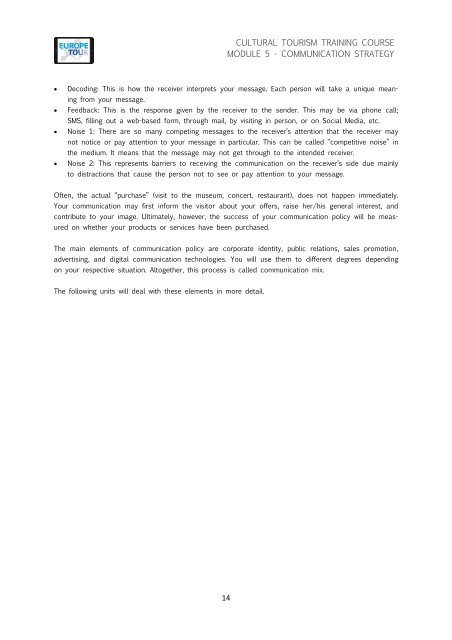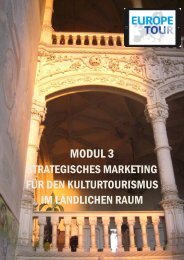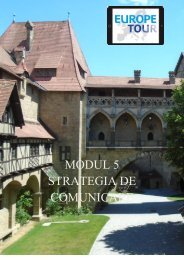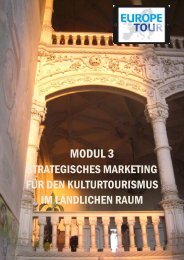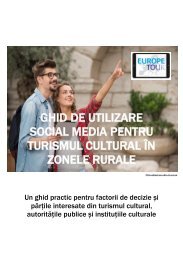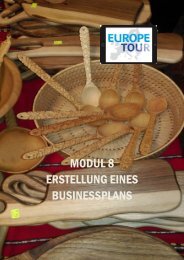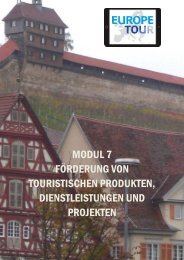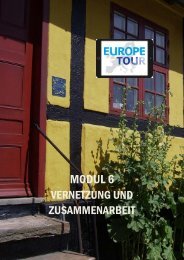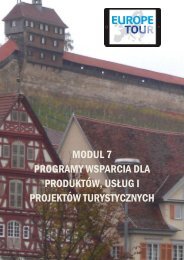M5_Communication_Strategy_v6
You also want an ePaper? Increase the reach of your titles
YUMPU automatically turns print PDFs into web optimized ePapers that Google loves.
CULTURAL TOURISM TRAINING COURSE<br />
MODULE 5 - COMMUNICATION STRATEGY<br />
<br />
<br />
<br />
<br />
Decoding: This is how the receiver interprets your message. Each person will take a unique meaning<br />
from your message.<br />
Feedback: This is the response given by the receiver to the sender. This may be via phone call;<br />
SMS, filling out a web-based form, through mail, by visiting in person, or on Social Media, etc.<br />
Noise 1: There are so many competing messages to the receiver’s attention that the receiver may<br />
not notice or pay attention to your message in particular. This can be called “competitive noise” in<br />
the medium. It means that the message may not get through to the intended receiver.<br />
Noise 2: This represents barriers to receiving the communication on the receiver’s side due mainly<br />
to distractions that cause the person not to see or pay attention to your message.<br />
Often, the actual “purchase” (visit to the museum, concert, restaurant), does not happen immediately.<br />
Your communication may first inform the visitor about your offers, raise her/his general interest, and<br />
contribute to your image. Ultimately, however, the success of your communication policy will be measured<br />
on whether your products or services have been purchased.<br />
The main elements of communication policy are corporate identity, public relations, sales promotion,<br />
advertising, and digital communication technologies. You will use them to different degrees depending<br />
on your respective situation. Altogether, this process is called communication mix.<br />
The following units will deal with these elements in more detail.<br />
14


